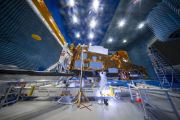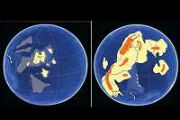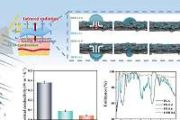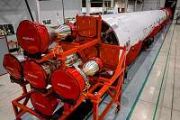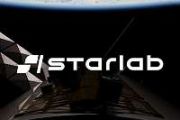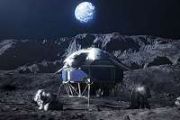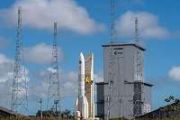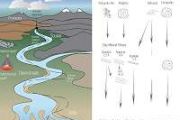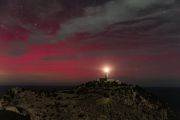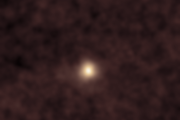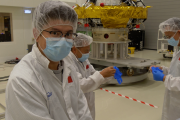
Copernical Team
Let's go on an ESCAPADE: NASA's small, low-cost orbiters will examine Mars' atmosphere
This request seems a bit unusual, so we need to confirm that you're human. Please press and hold the button until it turns completely green. Thank you for your cooperation!
Press and hold the button
If you believe this is an error, please contact our support team.
185.132.36.159 : 84bb8678-f49c-4062-8f28-6bb17412
Race for first private space station heats up as NASA set to retire ISS
This request seems a bit unusual, so we need to confirm that you're human. Please press and hold the button until it turns completely green. Thank you for your cooperation!
Press and hold the button
If you believe this is an error, please contact our support team.
185.132.36.159 : 33f0d363-2ec6-4d8f-9c86-dee45d5a
Blue Origin set for space launch after repeated delays
This request seems a bit unusual, so we need to confirm that you're human. Please press and hold the button until it turns completely green. Thank you for your cooperation!
Press and hold the button
If you believe this is an error, please contact our support team.
185.132.36.159 : 8db09545-f26d-4f5a-bcdb-439a5c3c
A close-up look at the first metal part made in space

This February, the first-ever metal part 3D-printed in space landed on Earth. Produced in the European Space Agency’s Metal 3D Printer Technology Demonstrator on the International Space Station, it is now in the hands of ESA’s engineers at ESTEC, the agency’s technical centre in the Netherlands, who poke and prod it to understand how microgravity affected its printing process.
Brazil gears up to harness ESA’s Biomass data

As the COP30 climate conference gets underway in Brazil, the world’s attention is once again drawn to the plight of the Amazon – the planet’s largest and most vital rainforest. With the European Space Agency’s Earth Explorer Biomass satellite now in orbit, ESA is helping Brazil prepare to transform this new mission’s groundbreaking data into actionable knowledge for protecting the rainforest and confronting climate change.
Copernicus Sentinel-6B pre-launch media briefing
 Video:
00:49:31
Video:
00:49:31
Copernicus Sentinel-6B, a sea-level monitoring satellite, is due to be launched no earlier than 17 November. Officials from ESA, the European Commission, EUMETSAT, NASA and marine applications users are set to share the latest information about this exciting mission and to be on-hand to answer questions.
Watch: Sentinel-6B launch live broadcast

Sentinel-6B, the next sea-level monitoring satellite for the Copernicus Earth observation programme, is ready for launch at the Vandenberg Space Force Base in California in just a few days. Here’s how you can watch the liftoff live on ESA Web TV.
Distant Siblings Revealed as Pleiades Star Cluster Expands
 Astronomers at the University of North Carolina at Chapel Hill have determined the Pleiades star cluster extends far beyond its well-known core, revealing thousands of stellar siblings previously undetected. By analyzing data from NASA's Transiting Exoplanet Survey Satellite and the European Space Agency's Gaia space telescope, the research team identified a widespread stellar association surrou
Astronomers at the University of North Carolina at Chapel Hill have determined the Pleiades star cluster extends far beyond its well-known core, revealing thousands of stellar siblings previously undetected. By analyzing data from NASA's Transiting Exoplanet Survey Satellite and the European Space Agency's Gaia space telescope, the research team identified a widespread stellar association surrou Hydroponic plant factories enable continuous urban edamame harvest
 Researchers in Japan achieved year-round indoor cultivation of edamame using hydroponic nutrient film technique and LED lighting. Controlled plant factories allow crops to grow independently of outdoor climate by regulating light, temperature, humidity, carbon dioxide, and nutrients. This approach bypasses the usual challenges of open-field farming for legumes, which include lengthy growth cycle
Researchers in Japan achieved year-round indoor cultivation of edamame using hydroponic nutrient film technique and LED lighting. Controlled plant factories allow crops to grow independently of outdoor climate by regulating light, temperature, humidity, carbon dioxide, and nutrients. This approach bypasses the usual challenges of open-field farming for legumes, which include lengthy growth cycle Europe hosts first in-orbit satellite cybersecurity competition
 D-Orbit, a leader in orbital logistics, together with mhackeroni, a prominent ethical hacking team, concluded CTRLSpace CTF, Europe's first cybersecurity competition using an operational spacecraft as the testbed. The event, supported by ESA's Security Cyber Centre of Excellence and Security Office, culminated at ESA ESTEC in the Netherlands, where five teams participated in live scenarios aboar
D-Orbit, a leader in orbital logistics, together with mhackeroni, a prominent ethical hacking team, concluded CTRLSpace CTF, Europe's first cybersecurity competition using an operational spacecraft as the testbed. The event, supported by ESA's Security Cyber Centre of Excellence and Security Office, culminated at ESA ESTEC in the Netherlands, where five teams participated in live scenarios aboar 





